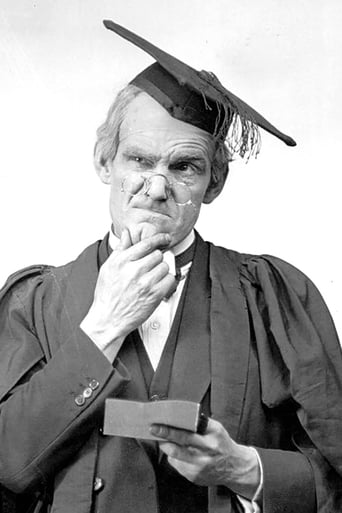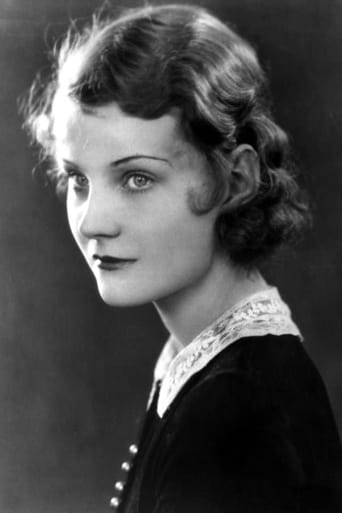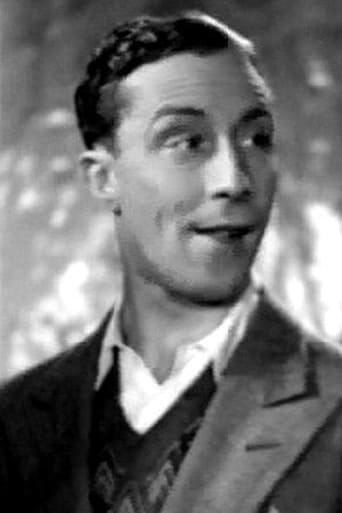Scanialara
You won't be disappointed!
VeteranLight
I don't have all the words right now but this film is a work of art.
Intcatinfo
A Masterpiece!
StyleSk8r
At first rather annoying in its heavy emphasis on reenactments, this movie ultimately proves fascinating, simply because the complicated, highly dramatic tale it tells still almost defies belief.
malcolmgsw
This is an interesting and intriguing film.Everything is a dig aimed at the BBC.Will Hay plays William Garland director General of NBG which of course stands for no bloody good.Hays name is a play on the name of John Reith the stuffy moralistic head of the BBC.The film accurately reflects the then current battle between radio and the music halls.They were already on their names from a combination of radio and talkies.They would stagger on for a further 25 years before being dealt a knockout blow by TV.There are so many famous music hall performers showcased by this film it is a real treasure trove.The film is ahead of its time in featuring TV which would become a reality in 1936.
Enoch Sneed
This film is obviously a British attempt at a 'Paramount On Parade'-type showcase of entertainers. The storyline (such as it is) involves an attempt to put together a variety show on a radio network. In a sense the film manages to have its cake and eat it: we see the 'legitimate' acts who are to appear on the show (Ted Ray, Ronald Frankau), then (when a scheming theatre impresario forbids them to broadcast) another crop of music hall stars turn up as employees of the radio network and are able to fill their places (including a rare double act by Lily Morris and Nellie Wallace). Also in the cast is Billy Bennett ('Almost a Gentleman') as the Commissionaire; he isn't used much but it is good to see him in one of only four film appearances.Other 1930's stars appear in cameos (Clapham and Dwyer, Claude Dampier). I suppose none of these names mean a great deal now but to nostalgia buffs like me they make the film a real treasure trove. Watch Ted Ray's violin act and try to think of anything to match it today.The climax is a colour sequence representing an outside broadcast. The colour process is a bit shaky (at least on my DVD) but it must have been something of a novelty at the time.Another noteworthy feature of the film is the Art Deco NBG building and offices. There are some very interesting pieces of design if you look out for them. (For a non-English audience I had better explain that the name of the radio network - National Broadcasting Group - gives the initials NBG. In 1930's Britain this stood for No Bloody Good.)As for Will Hay; well, he appears, but not in his usual character (apart from the occasional offended sniff) and acts more as an anchor for the plot. So, not part of the true Hay canon, but still an interesting curiosity.
Ted Hering
The story line is simple: A new program director of the NBG radio network (clearly a parody of the staid BBC) wants to update the programs with new talent. The stuffy powers-that-be are determined to keep dignity and tradition.Musicals are always hard to rate. In this case, the silly Three Stooges type story line and humor is really glue to hold the production numbers together. The movie is, in fact, a genuine variety show - and some of the acts are quite good. Several routines mimic Busby Berkeley. Others are pure vaudeville. I'd have to say the high point is the color segment with Alberta Hunter (an African-American who made recordings with Fats Waller). In addition to Alberta's stirring singing, the backup dancers stand on over-sized African drums, to give a surrealistic, dream-like effect. Unfortunately, this was evidently Alberta's only movie. Another high point for me is the novelty act by Stanelli, a brief segment in which the maestro plays tuned auto horns. But then, I'm a fan of Spike Jones.As for the comedy bits, I think the funniest moment is the "exercise" program, in which an overweight "coach" leans back in his overstuffed chair, counting out "1-2-1-2..." into the microphone, and pumping a billows in rhythm to simulate his vigorous breathing.Surely this film is more nostalgic to British audiences than to us Yanks. I'm led to believe the performers were all theater and music hall favorites in their day.
Gerald-5
So, what was surprising about it? There is an anti-Hitler comment which, for 1934 when the film was made, was unusually perspicatious. There is a long number by a black singer deploring the fact that people think she has sin because of the colour of her skin (I wonder if the film was shown in the US of A?) and there is a massive television broadcast to mobile outdoor screens - surely, in 1934, no one really thought TV would ever amount to that?



